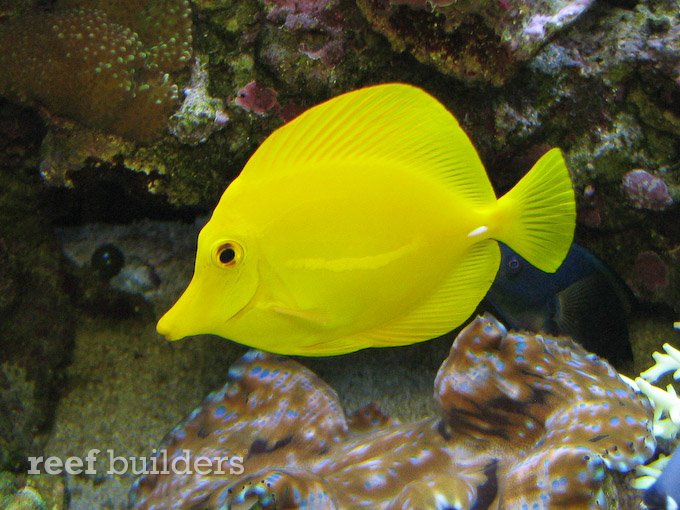For nothing short of years, there have been rumors of captive-bred tangs permeating hobbyist chatter. Most of these rumors are fueled by the collection of small Regal Tangs (Paracanthrus hepatus) and a general misunderstanding of what “tank raised” means (quite literally, tank-raised means reared in a tank for an unspecified amount of time, and is most often applied to wild caught youngsters that are reared and then later sold. Tank-raised does not imply that captive parents spawned and created viable offspring that were reared, aka. captive-bred fish). In the past week alone, two bits of news relating to Yellow Tang (Zebrasoma flavescens) breeding projects will probably add fuel to the rumors suggesting that there are captive-bred tangs. Better to set the record straight right now.
First, there is a new report, “Advances in Breeding and Rearing Marine Ornamentals”, by Olivotto et. al, running in the April, 2011 edition of the Journal Of The World Aquaculture Society. It was a pretty solid piece, but one sentence caught my attention. “A smallscale culture-technology for Parvocalanus spp. copepods was used to successfully rear some“difficult species” such as the flame angel fish, Centropyge loriculus, and the yellow tang, Zebrasoma flavescens (Laidley et al. 2009).” Of course, this blew me away.
I had to track down Dr. Laidley, who was quick to clarify what has, and has not, been achieved. My take – “success” means different things to different people, and the authors of this journal article do not share the same definition of the term. Yes, there has been progress by Dr. Laidley, but they have yet to see fish past settlement, let alone reaching a market sized juvenile (my version of success when it comes to breeding marine fish).
A second bit of news was announced in the March 2011 Regional Notes of the Centers for Tropical and Subtropical Aquaculture (CTSA). The news? Captive-spawned Yellow Tangs (Zebrasoma flavescens) making it to 14 days post hatch at the Oceanic Institute in Hawaii. This is being promoted by some as “big news” and maybe it is, but in truth, it’s almost a month less than the current “official” record I can track down, belonging to Syd Kraul, 42 days post hatch. Of course, I can’t find the reference, but I genuinely seem to recall Kraul having larvae at 70 days post hatch, and still no settlement. With a larval duration claimed to be 10 weeks, and with other fish (i.e. Centropyge sp. Angelfish) known to have similar durations, it’s safe to say that we have a long way to go. I think the thing that really caught my attention is that once again, Dr. Laidley is cited as one of the people responsible for this 14 days post hatch success (along with Chatham K. Callan, Melissa D.C Rietfors, Michael Dean Kline, and Eric W. Martinson).
I certainly don’t wish to detract from the work of this team, but we need to put it in perspective. Afterall, I’ve never even spawned a Tang. They are certainly making progress. Knowing that related fish (the Rabbitfishes…think “Foxface”) are cultured as foodfish, it is conceivable that we will crack the code for breeding and rearing Acanthurids, possibly in the next decade or less.
The take away lesson? Even the scientific literature can be misleading at times. Many people in the hobby like to say they’ve “bred” something, when in reality all they’ve done is had a spawning. It pays to investigate and dig deeper, to be a “Skeptical Reefer” as our friend Richard Ross would encourage. I wish to thank Dr. Laidley for quickly clarifying the first news item, and simply can’t wait for the next big breakthrough. Please join me in wishing this team the best of luck! Let me say it now, if they break the code on Yellow Tangs, next up should be Achilles and Chevrons (or maybe Gemmatums?)



